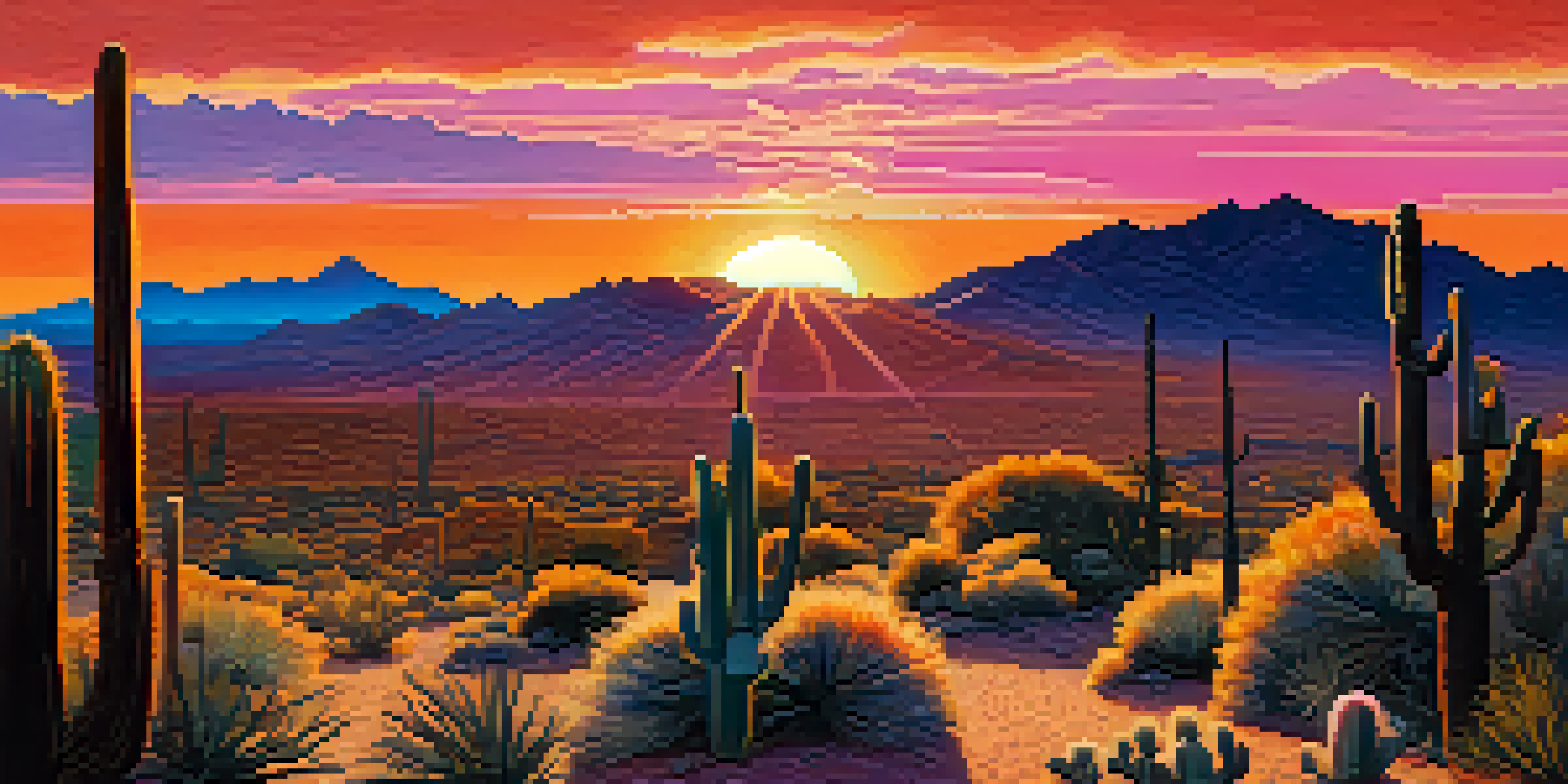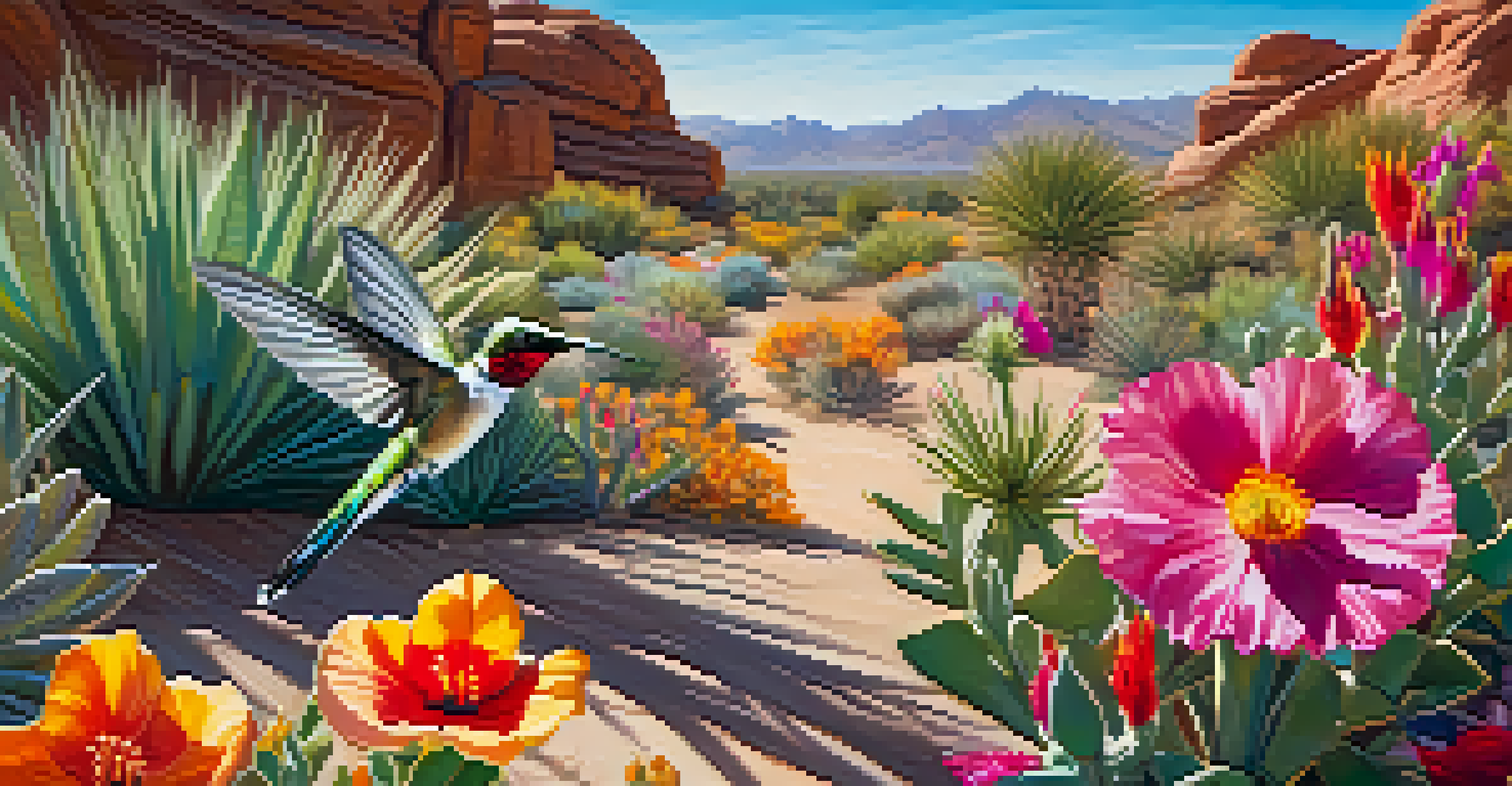Wildlife Photography in Phoenix: Best Locations

Why Phoenix is a Wildlife Photographer's Paradise
Phoenix, with its stunning desert landscapes and diverse ecosystems, offers a unique backdrop for wildlife photography. The region's mix of urban and natural settings creates endless opportunities to capture fascinating wildlife moments. From the bustling city streets to serene desert trails, photographers can experience a variety of habitats all in one location.
In every walk with nature one receives far more than he seeks.
What makes Phoenix particularly special is the variety of species that inhabit the area. You can find everything from majestic birds of prey to elusive desert mammals, making it a treasure trove for photographers. The warm climate and abundance of sunlight also contribute to excellent shooting conditions year-round.
Moreover, local wildlife is often accustomed to human presence, making it easier to observe and photograph them. This accessibility allows both amateur and professional photographers to hone their skills and create stunning imagery without venturing too far from the city.
Top Wildlife Locations in Phoenix: South Mountain Park
South Mountain Park is one of the largest municipal parks in the country and a prime location for wildlife photography. With over 16,000 acres of rugged terrain, it provides plenty of opportunities to spot animals such as coyotes, bobcats, and various bird species. The park's extensive trail system allows photographers to explore different areas and find the perfect shot.

The stunning desert flora and stunning views of the city also enhance the photography experience. During sunrise and sunset, the lighting creates a magical atmosphere, perfect for capturing wildlife in their natural habitat. Plus, the diverse landscapes—from valleys to mountains—add depth to your photos.
Phoenix: A Wildlife Photography Haven
Phoenix offers diverse ecosystems and accessible wildlife, making it an ideal location for photographers of all skill levels.
Visiting South Mountain Park during different seasons is also recommended, as wildlife activity varies throughout the year. Spring, in particular, is a great time to witness blooming flowers and increased animal activity, making it a favorite among photographers.
Exploring Wildlife Photography at the Desert Botanical Garden
The Desert Botanical Garden is not just a haven for plant lovers; it's also a fantastic spot for wildlife photography. As you wander through the garden, you’ll encounter a variety of local wildlife, including butterflies, hummingbirds, and desert reptiles. The beautifully curated plant displays create vibrant backdrops for capturing stunning wildlife shots.
Photography is the story I fail to put into words.
With over 50,000 desert plants, the garden offers diverse settings that attract various species. The contrast between the colorful flora and the creatures that inhabit it can lead to truly striking photographs. Plus, the well-maintained paths make it easy to navigate and find the best angles.
Additionally, the garden hosts seasonal events that often attract wildlife, providing even more opportunities for unique photography. Whether you're a beginner or a seasoned pro, the Desert Botanical Garden offers a picturesque environment for capturing nature's beauty.
Birdwatching at the Agua Fria National Monument
For bird enthusiasts, the Agua Fria National Monument is a must-visit location. This expansive area is home to a variety of bird species, including hawks, eagles, and songbirds, making it a prime spot for wildlife photographers. The diverse landscapes, from riparian zones to arid desert, provide different habitats for various bird species.
The best time to visit is during migration seasons, when you can witness an influx of birds passing through. With a camera in hand, you can capture dynamic shots of birds in flight or perched on branches, framed by stunning vistas. The peaceful surroundings also create a calming atmosphere for photography.
Key Locations for Wildlife Shots
Top spots like South Mountain Park and the Desert Botanical Garden provide rich opportunities to capture stunning wildlife imagery.
As you explore the monument, keep an eye out for the historical petroglyphs that add an interesting element to your photographs. Combining wildlife and cultural history can result in captivating images that tell a broader story.
Capturing Desert Wildlife at the Phoenix Sonoran Preserve
The Phoenix Sonoran Preserve is a hidden gem for wildlife photographers seeking a more rugged experience. This vast area features miles of trails that allow you to immerse yourself in the natural beauty of the Sonoran Desert. Here, you can encounter wildlife such as jackrabbits, lizards, and a variety of birds, all thriving in their arid environment.
One of the highlights of the preserve is the opportunity to photograph the iconic saguaro cactus, which serves as a backdrop for many desert animals. The contrast of the towering cacti against the vibrant sunsets creates a breathtaking setting for wildlife photography. It’s a place where you can truly capture the essence of the desert.
Visiting the preserve during early mornings or late afternoons provides the best light for photography. This is when wildlife is most active, allowing you to capture them in action against the stunning desert landscape.
Wildlife Photography in the Phoenix Zoo
The Phoenix Zoo is not just a place to see animals; it's also a fantastic spot for wildlife photography. With over 1,400 animals representing more than 200 species, the zoo offers numerous opportunities to capture stunning images. From playful meerkats to majestic lions, there’s a diverse range of wildlife to photograph.
What sets the zoo apart is its focus on conservation and education, which can add depth to your photography. You can capture animals in more natural habitats, which enhances the overall story of your images. The zoo's design mimics natural environments, providing a great backdrop for your shots.
Mastering Timing in Photography
Success in wildlife photography hinges on understanding animal behavior and being patient, particularly during early mornings and late afternoons.
Visiting during feeding times or special events can also lead to unique photographic opportunities. Engaging with the animals and capturing their personalities can result in memorable photographs that resonate with your audience.
The Role of Timing and Patience in Wildlife Photography
When it comes to wildlife photography, timing and patience are your best friends. Animals are unpredictable, and capturing the perfect moment often requires waiting quietly and observing your surroundings. This is especially true in places like Phoenix, where wildlife can be elusive.
Early mornings and late afternoons are often the best times for photography, as animals are more active during these cooler parts of the day. The soft light during these hours also creates stunning photographic conditions, casting a warm glow over your subjects. Understanding animal behavior can help you anticipate their movements and increase your chances of getting that perfect shot.

Remember that wildlife photography is not just about the end result; it's also about the experience. Enjoying the quiet moments in nature can lead to unexpected discoveries and a deeper appreciation for the wildlife you’re trying to capture.
Tips for Successful Wildlife Photography in Phoenix
To enhance your wildlife photography experience in Phoenix, consider a few essential tips. First, invest in a good telephoto lens, which allows you to capture subjects from a distance without disturbing them. This is especially important in areas where wildlife may be skittish or sensitive to human presence.
Secondly, familiarize yourself with the local wildlife and their habits. Understanding when and where to find certain species can make all the difference in your photography. Researching seasonal patterns and migration can help you plan your visits effectively.
Lastly, always be respectful of nature and the animals you are photographing. Keep a safe distance and avoid disturbing their habitats. By being a responsible photographer, you not only protect wildlife but also ensure that future generations can enjoy these beautiful creatures.